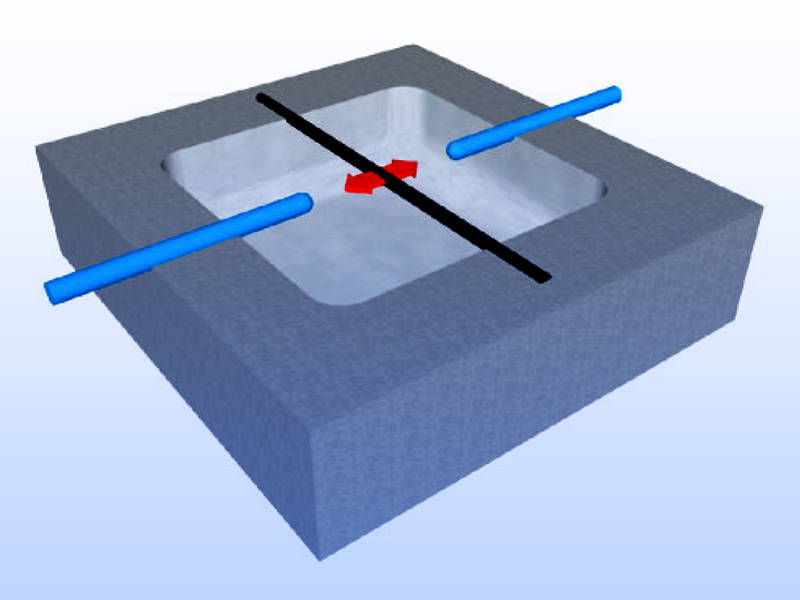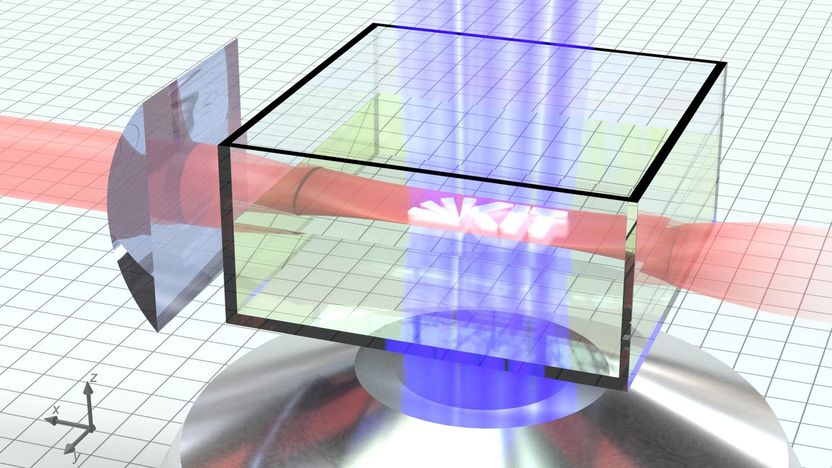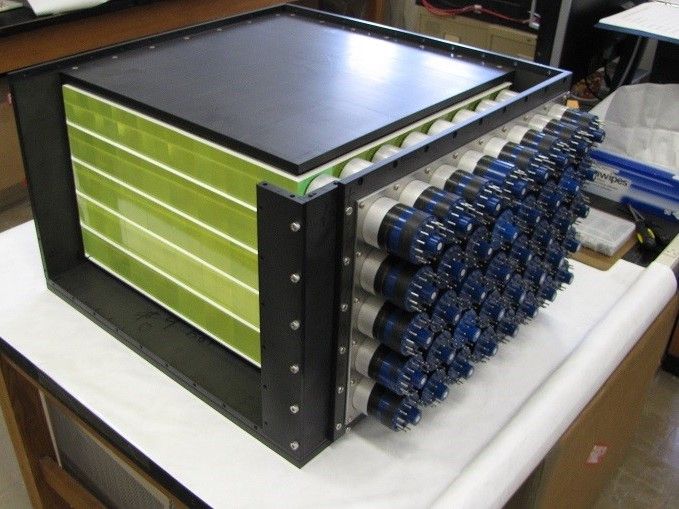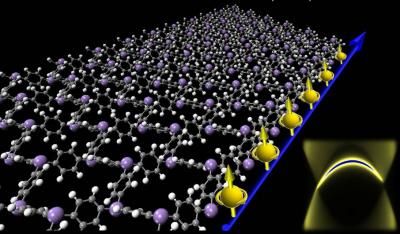Quantum computers counting on carbon nanotubes
carbon nanotubes can be used as quantum bits for quantum computers. A study by physicists at the Technische Universitaet Muenchen (TUM) has shown how nanotubes can store information in the form of vibrations. Up to now, researchers have experimented primarily with electrically charged particles. Because nanomechanical devices are not charged, they are much less sensitive to electrical interference.

Like a guitar string nanotubes (black) can be clamped and excited to vibrate. An electric field (electrodes: blue) ensures that two of the many possible states can be selectively addressed.
M.J. Hartmann, TUM
Using quantum mechanical phenomena, computers could be much more powerful than their classical digital predecessors. Scientists all over the world are working to explore the basis for quantum computing. To date most systems are based on electrically charged particles that are held in an "electromagnetic trap." A disadvantage of these systems is that they are very sensitive to electromagnetic interference and therefore need extensive shielding. Physicists at the Technische Universitaet Muenchen have now found a way for information to be stored and quantum mechanically processed in mechanical vibrations.
Playing a nano-guitar
A carbon nanotube that is clamped at both ends can be excited to oscillate. Like a guitar string, it vibrates for an amazingly long time. "One would expect that such a system would be strongly damped, and that the vibration would subside quickly," says Simon Rips, first author of the publication. "In fact, the string vibrates more than a million times. The information is thus retained up to one second. That is long enough to work with."
Since such a string oscillates among many physically equivalent states, the physicists resorted to a trick: an electric field in the vicinity of the nanotube ensures that two of these states can be selectively addressed. The information can then be written and read optoelectronically. "Our concept is based on available technology," says Michael Hartmann, head of the Emmy Noether research group Quantum Optics and Quantum Dynamics at the TU Muenchen. "It could take us a step closer to the realization of a quantum computer."
Original publication
Other news from the department science

Get the chemical industry in your inbox
By submitting this form you agree that LUMITOS AG will send you the newsletter(s) selected above by email. Your data will not be passed on to third parties. Your data will be stored and processed in accordance with our data protection regulations. LUMITOS may contact you by email for the purpose of advertising or market and opinion surveys. You can revoke your consent at any time without giving reasons to LUMITOS AG, Ernst-Augustin-Str. 2, 12489 Berlin, Germany or by e-mail at revoke@lumitos.com with effect for the future. In addition, each email contains a link to unsubscribe from the corresponding newsletter.
Most read news
More news from our other portals
Last viewed contents
How to measure oxygen coefficient in complex oxides
Gibbs_algorithm
Sibutramine
Meg_Whitman

Joining forces: fast-as-lightning 3D microprinting with two lasers - Micrometer-sized Structures in Just the Blink of an Eye
Biological_small-angle_X-ray_scattering
Luminiferous_aether
Micromeritics Instrument Corp. acquires Freeman Technology
Self-envy




























































